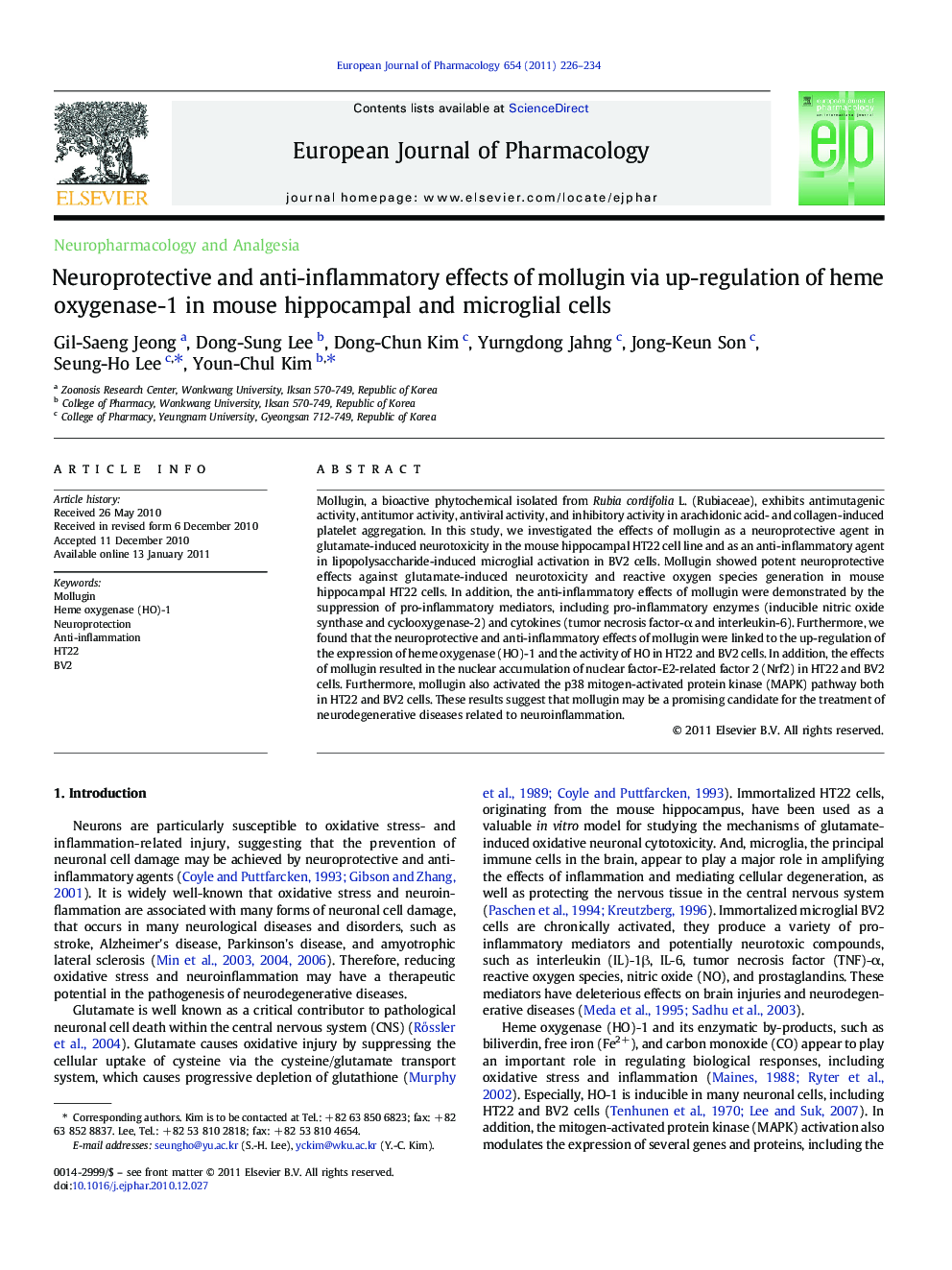| Article ID | Journal | Published Year | Pages | File Type |
|---|---|---|---|---|
| 2532970 | European Journal of Pharmacology | 2011 | 9 Pages |
Mollugin, a bioactive phytochemical isolated from Rubia cordifolia L. (Rubiaceae), exhibits antimutagenic activity, antitumor activity, antiviral activity, and inhibitory activity in arachidonic acid- and collagen-induced platelet aggregation. In this study, we investigated the effects of mollugin as a neuroprotective agent in glutamate-induced neurotoxicity in the mouse hippocampal HT22 cell line and as an anti-inflammatory agent in lipopolysaccharide-induced microglial activation in BV2 cells. Mollugin showed potent neuroprotective effects against glutamate-induced neurotoxicity and reactive oxygen species generation in mouse hippocampal HT22 cells. In addition, the anti-inflammatory effects of mollugin were demonstrated by the suppression of pro-inflammatory mediators, including pro-inflammatory enzymes (inducible nitric oxide synthase and cyclooxygenase-2) and cytokines (tumor necrosis factor-α and interleukin-6). Furthermore, we found that the neuroprotective and anti-inflammatory effects of mollugin were linked to the up-regulation of the expression of heme oxygenase (HO)-1 and the activity of HO in HT22 and BV2 cells. In addition, the effects of mollugin resulted in the nuclear accumulation of nuclear factor-E2-related factor 2 (Nrf2) in HT22 and BV2 cells. Furthermore, mollugin also activated the p38 mitogen-activated protein kinase (MAPK) pathway both in HT22 and BV2 cells. These results suggest that mollugin may be a promising candidate for the treatment of neurodegenerative diseases related to neuroinflammation.
